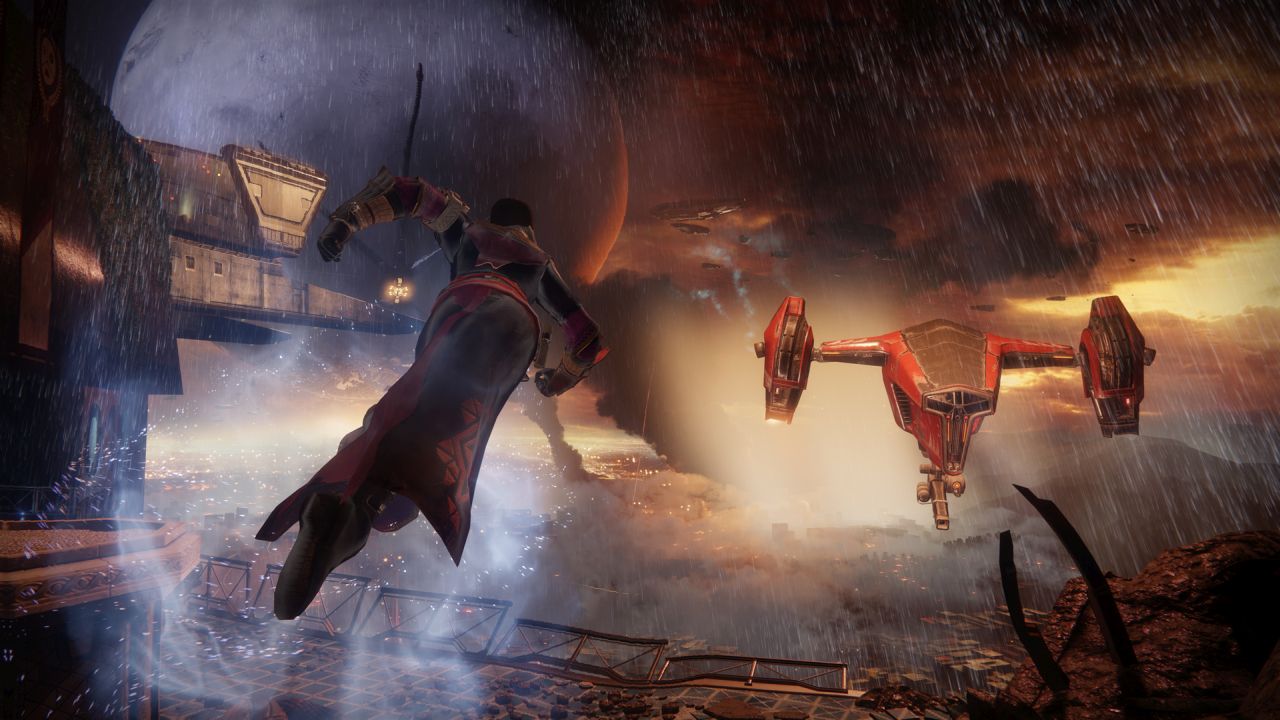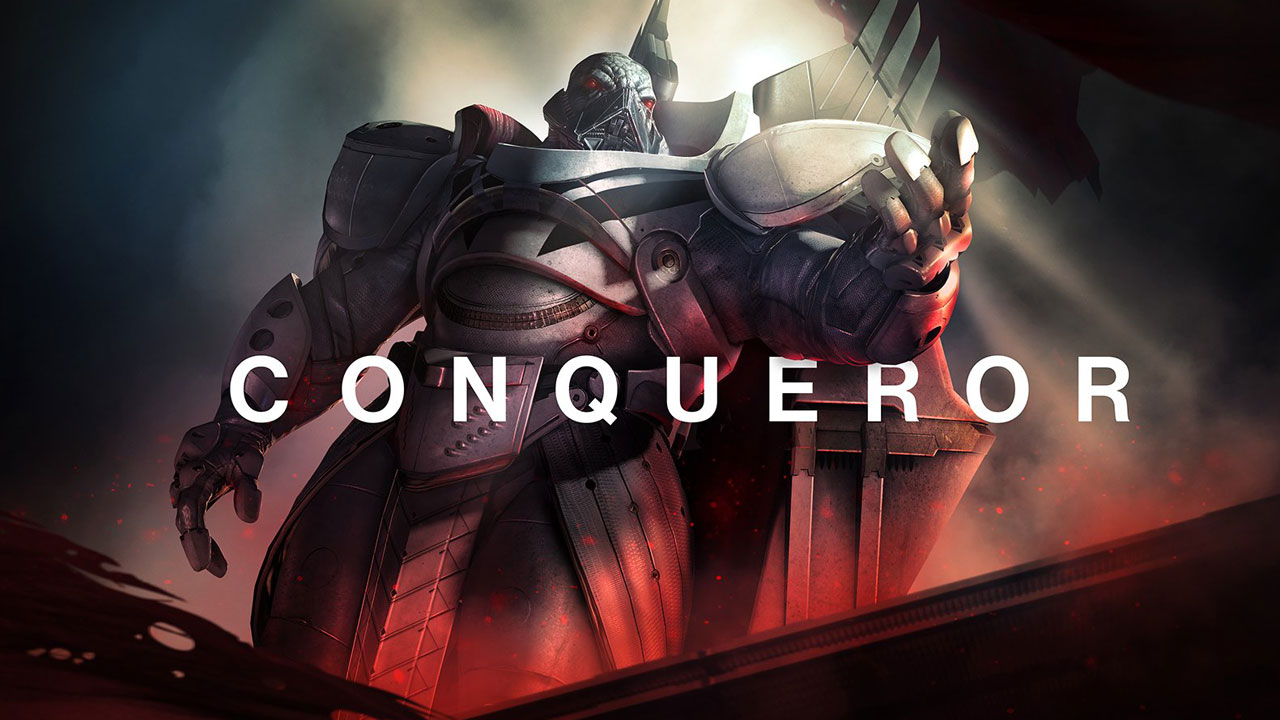For all its promises, Destiny 2's story campaign is as old school as they come
Destiny 2 has a plot in there somewhere, but it doesn't reward attention and interrogation.
Destiny 2 feels likes its beautiful, busy environments were created based on some broad narrative brushstrokes and design goals, and then another team came along later on and plugged vaguely-related missions in any old where.
Well! That’s how open world video games are, isn’t it, and Destiny 2 probably doesn’t deserve to be called out specifically for it, even if other titles do a better job of making mission locations feel more crafted when compared to the rest of the open world.
But what makes Destiny 2’s missions feel especially hollow to me is the lack of memorable, immediate connection to the ongoing story and its supposed motivations - and the underwhelming nature of that story. For all Bungie’s talk of producing a cohesive narrative, giving us a central villain and putting all the story in the game instead of Grimoire cards, Destiny 2’s campaign fails to inject meaning into gameplay and environments.
To Bungie’s credit, Destiny 2’s campaign has a more straightforward plot than the first game: the Red Legion conquer the City. Ghaul steals your Light. You track down your former leaders, and then you bring down Ghaul’s best weapon. Finally, all of you attack the Red Legion together, ending in a final showdown with the man (?) himself. Easy! Hangs together.
But every time you arrive somewhere new along the way, you’re immediately sent off on a series of distracting, mandatory chores unrelated to this story thread except by the flimsiest pretext. Nessus is the only destination with an immediately grokkable and connected narrative, and while the rest of the Destinations do actually have story justifications they’re utterly forgettable and muddled due to a lack of signposting and callbacks, presenting merely as Follow The Waypoint And Kill Baddies Because Reasons.
"Ghaul isn’t actually present in your story, but in some other story happening in cutscenes you’re not involved with at all."
Bungie talked up Ghaul as a very complex and relatable villain, ever-present in the story as a primary motivator pulling you through the campaign as quickly as possible so you can get on with finding out The Real Destiny 2 Starts Here – but he isn’t successful in this role. Ghaul and the player character have no rapport, no chemistry, no personal connection; you have no reason to care about him beyond being told that he took your Light and conquered your city, things introduced only minutes earlier.
Ghaul isn’t actually present in your story after that, but in some other story happening in cutscenes you’re not involved with at all. This other story, about Ghaul’s history as a rejected infant left to die and his subsequent obsession with gaining worth, is only very lightly and vaguely communicated by the game itself, and has nothing whatsoever to do with you and what you’re doing. It’s also very much told, not shown, with the player relegated to a pure spectator role.
You’re not even told that much, for all the grandiose speeches and dramatic back and forth with The Other Cabal Guy (that’s the Consul, just FYI). Even the whole question of what the Cabal Empire is (let alone what Ghaul’s place in it is and who the Leviathan Raid boss is) is not really addressed “in-game” as Bungie said all pertinent lore would be. It’s occasionally referred to in some scannable quips and optional content, but the meat of it is in paper materials included with special editions – and Destiny 1’s Grimoire cards. Ah ha ha.
Compare and contrast with Wolfenstein: The New Order, which I played for the first time this weekend. Villains General Deathshead, Frau Engel and Bubi pop up in-game, interacting directly with you, multiple times. They threaten and harm people you’ve already had reason to come to know and like, or at least to empathise with, because they’re grounded and real characters. Things they do happen right in front of you, often while you’re still seeing through BJ’s eyes, in an example of showing rather than telling. There’s a very clear, black-and-white narrative of good versus evil anybody can immediately get behind, but poking into optional conversations, cutscenes and the blurbs on concept art, provides all the nuance, context, motivation and relatable character insight required to elevate story and characters beyond the cartoon macro structure.
Moreover, as ludicrous as Wolfenstein: The New Order’s story and situations are, they are threaded together so tightly that it’s very easy to follow the plot. Each mission within an arc builds naturally to the next and follows on from the last; when you go to the moon, you know why, and you care.
As a single-player game with linear play order and a set protagonist, Wolfenstein: The New Order has inarguable advantages over Destiny 2, which must navigate the murky waters of storytelling and mission design in open world, multiplayer spaces. But I do not excuse Destiny 2 on this count, because Bungie hasn’t done anything with the campaign to leverage or even acknowledge these differentiating factors; Destiny 2’s cutscenes, dialogue and missions would feel at home in a PS2 era game. In a game of millions of Guardians, it makes no effort to explain why only one regains the Light. It gives you the ability to create an avatar to represent you in the game world, but why bother when you have absolutely no agency* over your own story? It also maintains the illusion in all dialogue and cutscenes that there is only one active agent in the entire world, even when you’re clearly hanging about in a fireteam of three like, right then.
"It's a very old school video game affair where you are relentlessly drawn through a series of environments, suffer through terrible cutscenes, never have any agency over your actions and see no lasting change to the world state."
For some reason, Bungie has elected to disconnect gameplay and story entirely and fall back on old-fashioned game narrative tools. I asked the developer about this at a preview event, and was told that sometimes in games you just you have to accept such dissonances, offering them up as sacrifices on the sacred altar of Telling A Good Story.
That makes me quite angry, because Destiny 2’s story is not a god worthy of worship. It is not the Citizen Kane of video games. It’s not even the Marvel Cinematic Universe of video games, despite drawing very clear inspiration (can we please stop with the constant voiceover quips for a minute, please, please). It is, in fact, a very old school video game affair where you are relentlessly drawn through a series of environments, suffer through terrible cutscenes, never have any agency over your actions and see no lasting change to the world state.
And also? Absolutely none of your lore questions are answered or even acknowledged. To really put a cherry on it all, there’s a post-credits teaser which, along with a number of carefully hanging threads uncovered by thorough exploration, is supposed to make you excited for Bungie to do all this again! As if this time, this time, it’s suddenly going to lean into its own fiction and actually do something with it instead of presenting it as an afterthought to making cool guns and pretty environments.
And I mean – all this is fine. It’s fine! I still don’t care about the story even now I've seen the end, but I love Destiny 2’s loot cycle, as maddeningly opaque as it is, and I love its incredible gameplay feel. All of this I have written today is meaningless. Carry on as you were.
*I lied. You can choose not to shoot the Fallen Captain in the Titan World Quest. There are no consequences.






